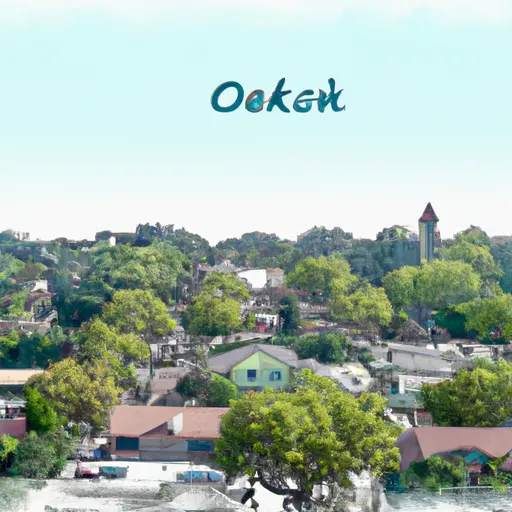-
 Snoflo Premium
Snoflo Premium
Get unlimited access to all our content
With no Ad interruptions! - Start Your Free Trial Login with existing account
Live-Oak
Eden Index
Climate
9.9
•
Recreation
3.1
•
Community
2.4
•
Safeguard
5.6/10

Live Oak is a small town located in Sutter County, California. It experiences a Mediterranean climate characterized by hot, dry summers and mild, wet winters. Summers in Live Oak are typically hot with temperatures often exceeding 90°F (32°C), while winters are cool and rainy, with temperatures averaging around 55°F (13°C).
The town sits along the Feather River, which plays a significant role in the hydrology of the area. The river provides a reliable water source for agriculture, and its tributaries contribute to the region's diverse ecosystem. The hydrology of Live Oak supports the growth of orchards, rice fields, and other agricultural activities.
Outdoor recreation opportunities in Live Oak are plentiful. The Feather River offers activities like fishing, boating, and swimming, attracting outdoor enthusiasts. Nature lovers can explore nearby wildlife refuges, such as the Sutter National Wildlife Refuge and the Gray Lodge Wildlife Area, which provide excellent opportunities for birdwatching, hiking, and photography. There are also parks and trails within the town, providing locals and visitors with opportunities for picnicking, walking, and enjoying the scenic beauty that Live Oak has to offer.
What is the Eden Index?
The Snoflo Eden Index serves as a comprehensive rating system for regions, evaluating their desirability through a holistic assessment of climate health, outdoor recreation opportunities, and natural disaster risk, acknowledging the profound impact of these factors on livability and well-being.
Climate Health Indicator (CHI): 9.9
Live-Oak receives approximately
653mm of rain per year,
with humidity levels near 63%
and air temperatures averaging around
17°C.
Live-Oak has a plant hardyness factor of
9, meaning
plants and agriculture in this region tend to thrive here all year round.
By considering the ideal temperature range, reliable water supplies, clean air, and stable seasonal rain or snowpacks, the Climate Health Indicator (CHI) underscores the significance of a healthy climate as the foundation for quality living.
A healthy climate is paramount for ensuring a high quality of life and livability in a region, fostering both physical well-being and environmental harmony. This can be characterized by ideal temperatures, reliable access to water supplies, clean air, and consistent seasonal rain or snowpacks.
Weather Forecast
Streamflow Conditions
Lower Sacramento
Area Rivers
Lower Sacramento
Snowpack Depths
Lower Sacramento
Reservoir Storage Capacity
Lower Sacramento
Groundwater Levels
Recreational Opportunity Index (ROI): 3.1
The Recreational Opportunity Index (ROI) recognizes the value of outdoor recreational options, such as parks, hiking trails, camping sites, and fishing spots, while acknowledging that climate plays a pivotal role in ensuring the comfort and consistency of these experiences.
Access to outdoor recreational opportunities, encompassing activities such as parks, hiking, camping, and fishing, is crucial for overall well-being, and the climate plays a pivotal role in enabling and enhancing these experiences, ensuring that individuals can engage in nature-based activities comfortably and consistently.
Camping Areas
| Campground | Campsites | Reservations | Toilets | Showers | Elevation |
|---|---|---|---|---|---|
| Live Oak Riverfront Park | 21 | 84 ft |
Nearby Fishing
Nearby Ski Areas
Catastrophe Safeguard Index (CSI):
The Catastrophe Safeguard Index (CSI) recognizes that natural disaster risk, encompassing floods, fires, hurricanes, and tornadoes, can drastically affect safety and the overall appeal of an area.
The level of natural disaster risk in a region significantly affects safety and the overall livability, with climate change amplifying these risks by potentially increasing the frequency and intensity of events like floods, fires, hurricanes, and tornadoes, thereby posing substantial challenges to community resilience and well-being.
Community Resilience Indicator (CRI): 2.4
The Community Resilience Indicator (CRI) recognizes that education, healthcare, and socioeconomics are crucial to the well-being of a region. The CRI acknowledges the profound impact of these elements on residents' overall quality of life. By evaluating educational resources, healthcare accessibility, and economic inclusivity, the index captures the essential aspects that contribute to a thriving community, fostering resident satisfaction, equity, and social cohesion.

